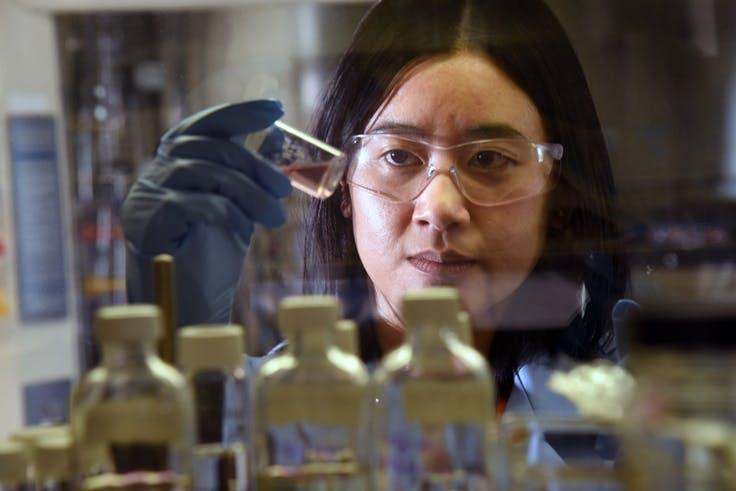Two unique materials that don’t behave like normal solids, liquids or gases could displace toxic chemicals used in today’s metal production processes.
The new approach uses salts that are liquid at room temperature combined with substances that travel like a gas but dissolve materials like a liquid. Together, they could offer a way to convert high-purity rare earth elements (REEs) to metals without using the toxic molten salts required by traditional methods.
High-purity rare earth metals are required to produce magnets, batteries, microelectronics and other components for everything from clean energy technologies to cellphones to missile guidance systems. A stable supply chain for REEs is necessary for the U.S. to be competitive.
That’s why the U.S. Department of Energy recently awarded funding to researchers at Idaho National Laboratory who are developing a low-temperature process that uses less energy and produces less waste. The Critical Materials Institute (CMI), a DOE energy innovation hub established in 2013, is funding the work.
INL chemist Dr. Donna Baek is conducting experiments on how to make metallic forms of REEs using room-temperature ionic liquids (RTILs) and electrochemistry.
RTILs are, as their name implies, salts that are liquid at low temperature. The concept at the heart of Baek’s research is that an electrochemical cell can be used to convert raw powders containing REEs into their reduced metallic form. The key is to dissolve the powders into the RTILs.
The biggest challenge with RTILs is their viscosity, which limits the movement of dissolved ions to the cell’s cathode, where the reduction to pure metal happens. To address this, Baek introduced supercritical fluids, substances kept at a temperature and pressure that allows them to travel through solids like a gas and dissolve materials like a liquid.
Baek was originally focused solely on supercritical fluids. “I pondered for a bit to see how I could get this to work, and that’s when ionic liquids popped into my mind,” she said. “I had previously worked with ionic liquids, so I knew ionic liquids would be the glue I needed to do electrochemistry in a supercritical fluid.”
For the complete story, link to Idaho National Laboratory

